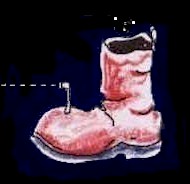< back  next >
next >
studioSUMO
Wall-Eye
"Wall-Eye" - A blur, a detail, a view into a closed entity.
"Walleye - having an oblique uncertain experience or
view."(from
Webster"s Dictionary).
"Wall-Eye" was a viewing box with which to reconsider the
buried nature of
a construction site. While we generally consider the activity at a
construction site to be an accumulation above ground, Wall-Eye
examined the
stories that exist below, stories that have the potential to become
unearthed as the ground is overturned. As our study we unearthed a
piece
of ground.
This wedge of soil was placed in a box with the plexi-glass surface
forming
the face opposite the peep hole looking into the site. In this
gesture, we
recontextualized and reoriented the soil with respect to a new
horizon line.
The Buried Landsacpe. Within the wedge of soil are buried remnants,
cultural artifacts (commonly referred to as trash) that
historically
describe the site, giving the earth a value beyond its potential
for
development.
The Optical Landscape. Mediating one's view of this landscape was a zone
of magnifying glasses. This allowed a detailed study of potentially
ignored fragments that, when blown up, force us to consider the
content of
the trash rather than merely the trash itself. Therefore, names, text, a
discarded dollar bill, or the unearthing of a mirror that reflected
our own
view became emphasized to the point where they were transformed as
landscape. In addition, the construction workers were able to view
through
the peep-hole in reverse from the inside.
By simulataneously creating a landscape defined by details such as
site
specific conditions like the plaza in front of the construction
site and by
one's own view, one's eye, into the construction site, a wall-eyed
perspective reflected the temporal nature of all construction
cycles.
© copyright note